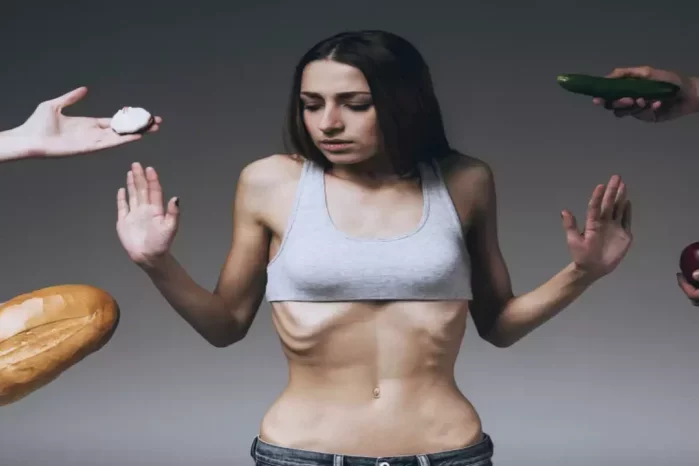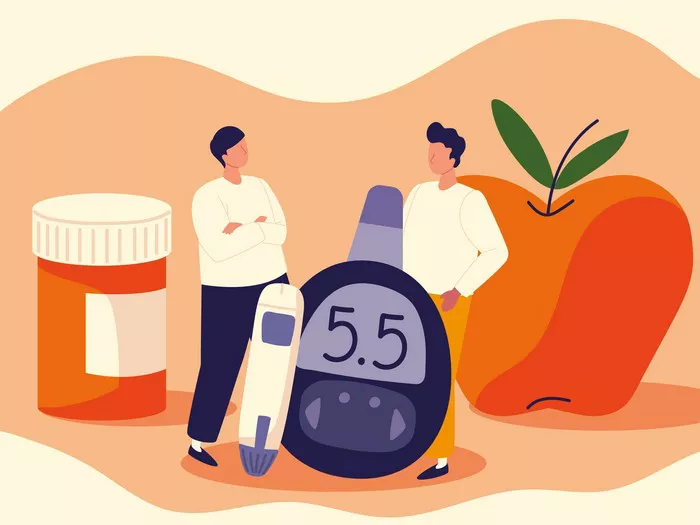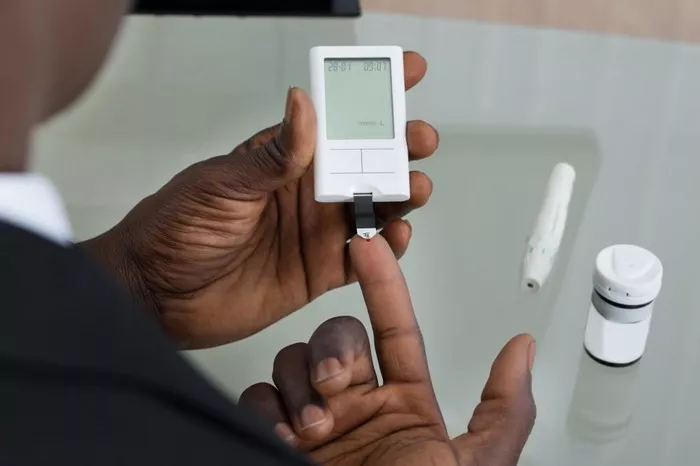Insulin resistance is a metabolic condition characterized by the body’s diminished ability to respond to insulin, a hormone crucial for regulating blood glucose levels. This condition plays a central role in the pathophysiology of several metabolic disorders, including type 2 diabetes mellitus (T2DM), obesity, and metabolic syndrome. The liver, a vital organ in glucose and lipid metabolism, is significantly affected by insulin resistance. Understanding how insulin resistance impacts liver function is essential for comprehending the broader implications of metabolic diseases and developing effective therapeutic strategies.
Introduction to Insulin Resistance
Insulin is produced by the beta cells of the pancreas and is fundamental in promoting the uptake of glucose by tissues such as muscle and adipose tissue, thus lowering blood glucose levels. Insulin resistance occurs when these tissues become less responsive to insulin, necessitating higher levels of the hormone to achieve the same effect. The liver, a central organ in maintaining glucose homeostasis, is particularly susceptible to the effects of insulin resistance.
Insulin resistance in the liver manifests as an impaired ability to suppress gluconeogenesis (the production of glucose from non-carbohydrate sources) and glycogenolysis (the breakdown of glycogen into glucose). This dysregulation leads to hyperglycemia, a hallmark of diabetes and prediabetic conditions. Additionally, hepatic insulin resistance is closely linked to alterations in lipid metabolism, contributing to conditions such as non-alcoholic fatty liver disease (NAFLD) and dyslipidemia.
Mechanisms of Insulin Resistance in the Liver
Cellular and Molecular Pathways
Insulin exerts its effects by binding to the insulin receptor (IR) on the surface of target cells. This binding activates the receptor’s intrinsic tyrosine kinase activity, leading to a cascade of phosphorylation events that propagate downstream signaling through the insulin receptor substrate (IRS) proteins, primarily IRS-1 and IRS-2. These substrates then activate phosphatidylinositol 3-kinase (PI3K) and subsequently protein kinase B (Akt), which mediates the metabolic actions of insulin.
In the state of insulin resistance, several disruptions occur within this signaling pathway:
- Impaired Insulin Receptor Function: Post-translational modifications of the insulin receptor, such as phosphorylation at serine/threonine residues rather than tyrosine residues, can inhibit its activity.
- IRS Protein Dysregulation: Serine phosphorylation of IRS proteins, often triggered by inflammatory cytokines like tumor necrosis factor-alpha (TNF-α), impedes their ability to interact with the insulin receptor and downstream effectors.
- PI3K/Akt Pathway Inhibition: Reduced activation of PI3K and Akt leads to decreased translocation of glucose transporter type 4 (GLUT4) to the cell membrane in peripheral tissues and impaired suppression of gluconeogenesis in the liver.
Contributing Factors to Hepatic Insulin Resistance
Several factors contribute to the development of hepatic insulin resistance, including:
- Obesity: Adipose tissue in obese individuals releases increased amounts of free fatty acids (FFAs) and adipokines such as resistin and TNF-α, which interfere with insulin signaling pathways.
- Ectopic Fat Accumulation: Accumulation of triglycerides within hepatocytes, a condition known as hepatic steatosis, is strongly associated with insulin resistance. This intrahepatic lipid accumulation impairs insulin signaling and promotes lipotoxicity.
- Inflammation: Chronic low-grade inflammation, commonly seen in obesity, leads to the secretion of pro-inflammatory cytokines that disrupt insulin signaling.
- Genetic Factors: Polymorphisms in genes related to insulin signaling and lipid metabolism can predispose individuals to insulin resistance and its hepatic manifestations.
Consequences of Hepatic Insulin Resistance
Impaired Glucose Homeostasis
The liver plays a pivotal role in maintaining glucose levels through gluconeogenesis and glycogenolysis. Under normal conditions, insulin suppresses these processes. In the context of insulin resistance, this suppression is ineffective, leading to increased endogenous glucose production. The result is fasting hyperglycemia, a characteristic feature of T2DM.
Non-Alcoholic Fatty Liver Disease (NAFLD)
NAFLD encompasses a spectrum of liver conditions ranging from simple steatosis to non-alcoholic steatohepatitis (NASH), which can progress to cirrhosis and hepatocellular carcinoma. Insulin resistance is a key driver of NAFLD due to its effects on lipid metabolism:
- Increased Lipogenesis: Insulin resistance enhances de novo lipogenesis (DNL) in the liver by upregulating the expression of lipogenic enzymes through the sterol regulatory element-binding protein 1c (SREBP-1c) pathway.
- Impaired Lipid Oxidation: Insulin resistance diminishes the liver’s capacity to oxidize fatty acids, leading to their accumulation.
- Altered Lipid Export: Very low-density lipoprotein (VLDL) production and secretion are often increased in insulin-resistant states, contributing to dyslipidemia and further hepatic fat accumulation.
Dyslipidemia
Hepatic insulin resistance contributes to dyslipidemia, characterized by elevated triglycerides, low high-density lipoprotein (HDL) cholesterol, and an increase in small, dense low-density lipoprotein (LDL) particles. This dyslipidemic profile is a significant risk factor for cardiovascular disease.
Increased Risk of Hepatocellular Carcinoma
Chronic liver inflammation and ongoing hepatocyte injury, common in insulin-resistant states, increase the risk of hepatocellular carcinoma. The mechanisms include oxidative stress, chronic inflammation, and direct effects of insulin and insulin-like growth factors on cellular proliferation.
Therapeutic Approaches to Manage Hepatic Insulin Resistance
Lifestyle Interventions
- Diet: Dietary modifications to reduce caloric intake, particularly reducing refined carbohydrates and saturated fats, can improve insulin sensitivity. Diets rich in fiber, whole grains, and unsaturated fats are beneficial.
- Exercise: Regular physical activity enhances insulin sensitivity through multiple mechanisms, including improved muscle glucose uptake and reduced hepatic fat content.
- Weight Loss: Even modest weight loss (5-10% of body weight) can significantly improve insulin sensitivity and reduce hepatic steatosis.
Pharmacological Treatments
- Metformin: Metformin is a first-line treatment for T2DM that improves insulin sensitivity primarily by reducing hepatic glucose production.
- Thiazolidinediones (TZDs): TZDs, such as pioglitazone, enhance insulin sensitivity by activating peroxisome proliferator-activated receptor gamma (PPAR-γ), which regulates gene expression involved in glucose and lipid metabolism.
- GLP-1 Receptor Agonists: These agents not only improve glycemic control but also promote weight loss and have been shown to reduce liver fat content.
- SGLT2 Inhibitors: Sodium-glucose cotransporter-2 (SGLT2) inhibitors reduce blood glucose by promoting renal glucose excretion and have favorable effects on weight and cardiovascular outcomes, indirectly benefiting hepatic insulin resistance.
Emerging Therapies
- Farnesoid X Receptor (FXR) Agonists: FXR is a nuclear receptor involved in bile acid metabolism and lipid homeostasis. FXR agonists show promise in reducing hepatic steatosis and improving insulin sensitivity.
- Fibroblast Growth Factor 21 (FGF21) Analogues: FGF21 has metabolic regulatory effects, including enhancing insulin sensitivity and reducing liver fat.
- Anti-Inflammatory Agents: Targeting chronic inflammation with agents like TNF-α inhibitors may offer therapeutic benefits for hepatic insulin resistance.
Conclusion
Insulin resistance profoundly impacts liver function, disrupting glucose and lipid metabolism and contributing to the development of metabolic disorders such as T2DM and NAFLD. The interplay between genetic predisposition, lifestyle factors, and inflammation underscores the complexity of hepatic insulin resistance. Effective management requires a multifaceted approach, including lifestyle modifications and pharmacotherapy tailored to individual patient profiles. As research advances, new therapeutic targets and strategies continue to emerge, offering hope for better management of insulin resistance and its hepatic consequences. Understanding and addressing hepatic insulin resistance is crucial for mitigating the broader health impacts of metabolic diseases.
Related topics:
How Long Does It Take to Reset Insulin Resistance?



























